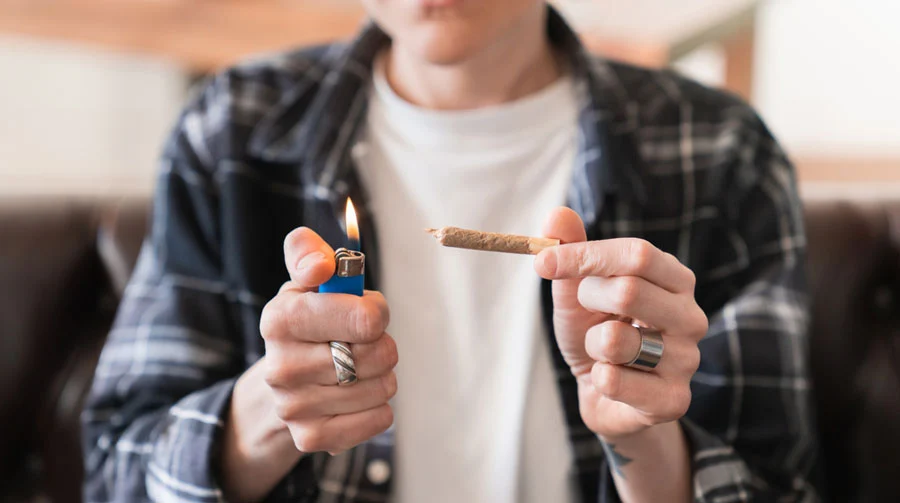Get a Breakdown on Putting Aside Cannabis from Catalina
Are you using more marijuana than you would like to be using? Maybe you find yourself consuming more cannabis than you used to and are concerned about what it means for your future.
If so, it may be time for a cannabis tolerance break, otherwise known as a T break. If so, you have found just the right resource to assist you!
And, if or when you feel ready to improve your mental and physical health and taking a T break doesn’t seem to be cutting it for you, allow Catalina Behavioral Health to come alongside you. We can walk you through the early days of cannabis withdrawal and help you cope without substance abuse.
Keep reading for our full guide on how to take an effective t-break, and if you would like additional support call now to talk with our expert enrollment team about your marijuana use.
Get Effective Cannabis Detox and Rehab Options
What is a Cannabis Tolerance Break?
As with many types of substance use, cannabis consumption can eventually lead to increased tolerance of the drug. As a result, you will need more of the substance to achieve the same high that you had at the very beginning of your recreational marijuana use. You need to take action if you feel you are heading toward an unhealthy cannabis dependence, which might mean taking a T break.
T breaks are a way to try to reset the body and work to lower your overall tolerance.
During a T break, you should go a minimum of 21 days without using any cannabis products. These 21 days allow your body to eliminate cannabis from your system and decrease your overall tolerance once again.
However, you may deal with some withdrawal symptoms from marijuana during your tolerance breaks, especially if you’ve been using it for a while.
8 of Our Best Practices for a T Break

Get ready to use less cannabis by preparing yourself with some of these best practices to decrease a high tolerance for marijuana.
1. Eliminate Cannabis Stashes
It might go without saying, but it will be tempting to turn to cannabis use during the uncomfortable first days of a tolerance break. If you have any of the substances lying around your living spaces or can gain easy access, cut that tie before you begin. Eliminate your stash by tossing it or giving it to a friend.
You should also eliminate alcohol and any other substances you use from your home.
2. Keep Busy During Tolerance Breaks
When you always use cannabis to promote appetite or sleep, it might have become ingrained as part of your routine. Going without could pose a challenge in the first few days. The best thing you can do is to prepare for your break by keeping busy.
Plan lots of activities that you might have been putting off or run some errands. This is a great time to try a new hobby, another side benefit of quitting weed, even if only temporarily.
3. Build Social Support
It could also be a good time to build in some social support to keep yourself from turning to cannabis use. Studies have shown that marijuana use contributes to poorer social support so work to rebuild. See friends, connect with family members, or even attend a group fitness class — anything to get you out of the house and engaged with others.
4. Set New Bedtime Routines
Unfortunately, many people turn to cannabis or weed for their daily routines like sleeping. It can be easy to fall asleep when under the influence, but this makes it much more challenging to do when you try to take a tolerance break.
Instead, set new bedtime routines such as:
- Taking a warm bath or shower an hour before bedtime
- Turning off screens at least 30 minutes before a planned bedtime
- Meditating or practicing some gentle yoga
- Going to sleep at the same time each day
- Avoiding caffeine and naps
- Exercising daily
5. Learn to Act “As If”

In addition to sleep disruptions, you may also find that hunger is a challenging subject for you. Many people use cannabis and other drugs to stimulate their appetite, a phenomenon most people know as the “munchies.” What do you do during that first week if you find that you just aren’t hungry?
Experts recommend that you act “as if” you are hungry. That means that you continue to eat on a regular schedule within the first week, the same way you would normally. Despite a lack of hunger signals, your body still requires nutrition to function, so don’t neglect this simple daily routine.
6. Let Yourself Feel Your Emotions
Another challenging aspect of taking a longer break from cannabis is that you could find strong emotions rising to the surface. Irritability and anxiety are two of the most common emotions that people experience. It is perfectly normal and acceptable to have these feelings, so let yourself feel them fully.
This is where skills like dialectical behavioral therapy can help. DBT helps you to notice your emotions and feel them without judgment. Getting help from a licensed professional who can guide you could be beneficial for you if you experience these emotional withdrawal symptoms.
Immediate Help for Marijuana Addiction
7. Cut Back on Hazardous Use
Studies show that people who take a break are often at greater risk of problematic or hazardous use up to six months following the break. Longer breaks are associated with better balance and outcomes six months down the line. Once your break is over, you should cut back on the amount of cannabis you use.
Most people need only half of what they need (or less) after a 21-day break. When you feel yourself starting to creep up on your tolerance again, know that you can weather the storm by taking another break. The positive effect on brain function from cannabis cessation is often so profound that many people choose to stay quit. However, not everyone is capable or confident in their ability to quit drugs entirely on their own.
8. Practice Spirituality

Did you know that lower spirituality tends to be correlated with higher relapse rates? Those who engage in a spiritual practice of any kind have a chance to strike a better balance. This might mean going to church, engaging with a spiritual text, or simply meditating for a little while to connect with your unique definition of a higher power.
If you do decide to attend a religious service, this also acts as a form of social support which can be very helpful when you decide to take a break from substance use. Religious services don’t have to be the only way you connect spiritually. You could also attend a 12-step meeting for support or a secular alternative like SMART Recovery.
What to Do If You Can’t Take a T Break Successfully
Sometimes, you might find that taking a T break is extremely difficult. Managing withdrawal symptoms when the body builds up a tolerance may require some professional assistance.
Catalina can help you get the support you need from experienced counselors and a team of medical professionals at a variety of treatment levels.
Inpatient Treatment for a Safe Environment
When you feel that you are at a greater risk of giving in to cannabis use, you may choose to reside in our facility for a short-term stay. The average length of stay is between 30 and 90 days, giving you a safe place to detox, learn new coping skills, and connect with your peers facing similar struggles.
It is a great way to kickstart your recovery if you find the idea of doing it on your own daunting. You may choose to use this time to explore any underlying reasons for substance misuse such as anxiety. Medication management could be beneficial at this stage of treatment.
Outpatient Treatment for Less Restrictive Care

Outpatient treatment could also be a great fit for you, especially if you are transitioning out of inpatient care. You receive many of the same services in terms of individual and group therapy sessions, but you are free to come and go between appointments. You may attend just a few hours each week or spend all day in our state-of-the-art facility.
We can help you learn some of the same skills mentioned above like DBT. Our team holds the necessary space to give you room to process substance use.
Up To 100% of Rehab Costs Covered By Insurance
Seek Help for Cannabis Use at Catalina Behavioral Health
When your chronic cannabis use is more than you can handle on your own, it might be time to explore addiction treatment for marijuana. A T break is a good first step, but when you find that you can’t manage it on your own, Catalina’s welcoming team can provide you with a safe container to process drug use and manage withdrawal symptoms.
If we sound like a good fit for you, reach out to our enrollment team today to verify your insurance benefits with a quick and confidential phone call!
Resources
- Moore, M. (n.d.). T Break.
- Cougle, J. R., McDermott, K. A., Hakes, J. K., & Joyner, K. J. (2020). Personality disorders and social support in cannabis dependence: A comparison with alcohol dependence. Journal of affective disorders, 265, 26–31.
- U.S. Department of Health and Human Services. (2022, July 15). Good sleep for good health. National Institutes of Health.
- The University of Vermont. (n.d.). Day 3 – food. Center for Health & Wellbeing at UVM.
- Davoudi, M., Allame, Z., Foroughi, A., & Taheri, A. A. (2021). A pilot randomized controlled trial of dialectical behavior therapy (DBT) for reducing craving and achieving cessation in patients with marijuana use disorder: feasibility, acceptability, and appropriateness. Trends in psychiatry and psychotherapy, 43(4), 302–310.
- Schoenthaler, S. J., Blum, K., Braverman, E. R., Giordano, J., Thompson, B., Oscar-Berman, M., Badgaiyan, R. D., Madigan, M. A., Dushaj, K., Li, M., Demotrovics, Z., Waite, R. L., & Gold, M. S. (2015). NIDA-Drug Addiction Treatment Outcome Study (DATOS) Relapse as a Function of Spirituality/Religiosity. Journal of reward deficiency syndrome, 1(1), 36–45. https://doi.org/10.17756/jrds.2015-007 Ansell, E. B., Bedillion, M. F., Farris, S. R., Gilbert, J. M., Koch, M. M., & Thureen, S. E. (2023). Cannabis use breaks in young adults: The highs and lows of tolerance breaks. Drug and alcohol dependence, 249, 109951. https://doi.org/10.1016/j.drugalcdep.2023.109951




